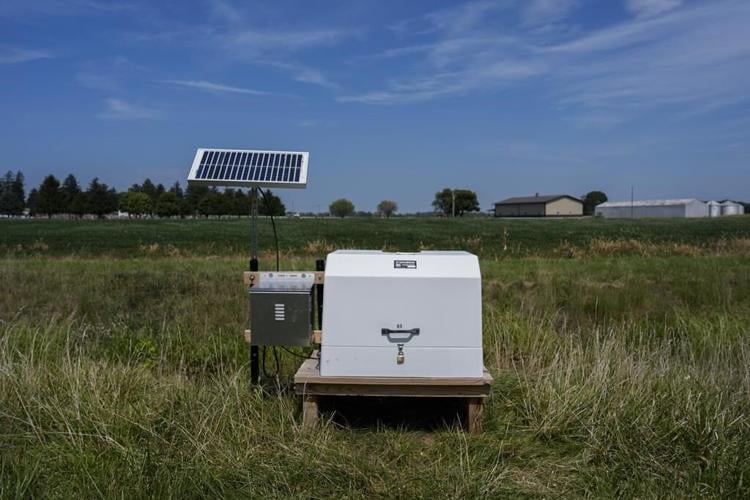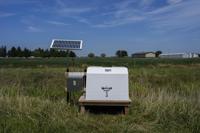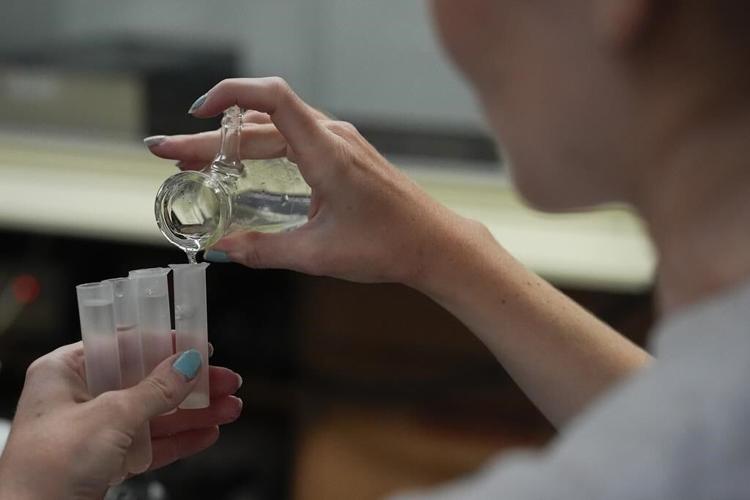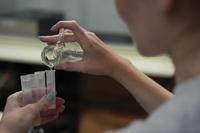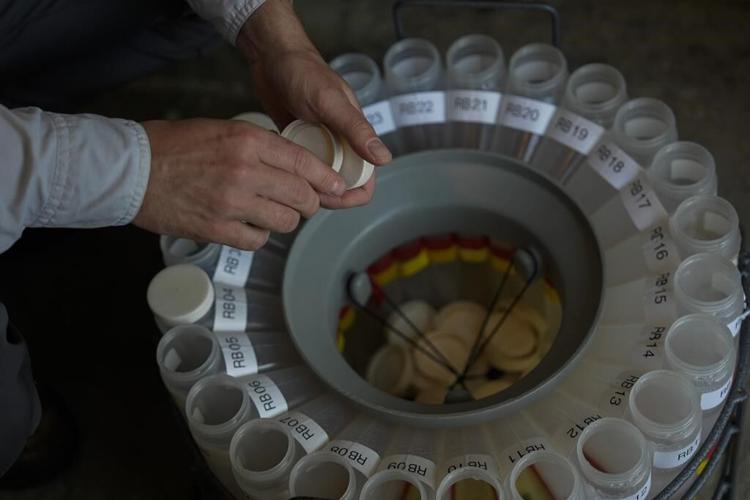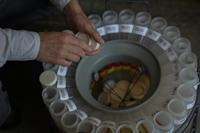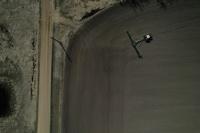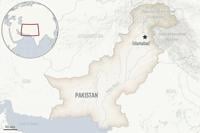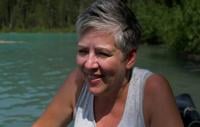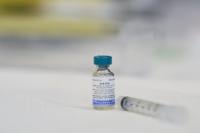OREGON, Ohio (AP) — On a warm late-summer evening, a small speedboat motored across a pea-green stretch of Lake Erie past a beach where a child sat splashing and a pair of newlyweds waded for a portrait photographer. On the sand, unseen or ignored, bright red signs warned people to stay out of the water due to dangerous algae toxins.
Some 70 miles away, farmer Bill Kellogg is trying to do something about the chronic algae blooms in America's southernmost Great Lake. Instead of scattering fertilizer atop his fields, Kellogg now uses a strip till machine that knifes fertilizer pellets 8 inches into the soil — deep enough that heavy rains won't wash it away.
He plants that strengthen the soil so it can absorb more nutrients. In other fields, he's replaced some crops with buffer strips of grasses and other plants that can absorb nutrient runoff before it shoots into streams bound for Erie, where the runoff would be potent fuel for the algae.
“We accept that we have a target on our back in the agriculture community,” Kellogg said.
Bacteria commonly called blue-green algae are often present in bodies of water throughout the world, but if fed too much of the phosphorus and nitrogen in farm fertilizers, they can turn into harmful algae blooms that can , create that kill marine life, spoil swimming, boating and tourism and .
Western Lake Erie is an ideal environment for the bacteria to thrive: It’s about 30 feet deep, the shallowest part of the shallowest Great Lake, and it heats up faster when temperatures are warm. And it’s where nutrients from farm fields along streams and creeks throughout the basin eventually drain into the Maumee River, which dumps into Erie at Toledo.
Nutrient runoff from agricultural fields, mostly fertilizer, accounts for about 80% of the nutrients that flow into Lake Erie, and half of the nutrients reaching the lake arrive via the Maumee.
Reducing the amount of nutrients — specifically phosphorus — was one focus of a 2015 agreement between the United States and Canada to cut . Researchers say progress has been made — the latest figure is that phosphorus is down about 32% — but the target likely won't be met.
This year's algae bloom in western Lake Erie was moderate compared to previous years. It appeared June 24, its earliest since monitoring began, and its late-summer peak covered about 660 square miles — larger than some previous years, but not nearly as thick as some other blooms.
to make algae blooms start earlier, last longer and potentially become more toxic as more intense rainstorms drive nutrients through waterways and higher temperatures warm the lake.
“If all things stay the same and the climate changes in the way we sort of expect it to over the coming decades, then things will get worse,” said Nate Manning, the interim director of the ��ɫֱ�� Center for Water Quality Research.
For Kellogg, who farms 7,400 acres of corn and soybeans in Forest, Ohio, conservation efforts on his farm have long been a personal priority; he regularly visits Lake Erie with his family to fish and swim. But he became even more committed after a 2014 bloom that led for more than 400,000 people in Toledo and southern Michigan.
“Once that happened, it got us into high gear,” Kellogg said.
Kellogg spent more than $1 million for the strip-till machine and the tractor to pull it that lets him tuck the solid fertilizer several inches below ground. It was a big outlay, but he said he's now spending about $300,000 less on fertilizer as less of it runs off. The liquid fertilizer he sometimes uses is stored in tanks that sit in a concrete basin to contain any leaks.
“Our yields have increased. Our fertilizer cost has dropped. Once you get hooked on something and you’ve proven it to yourself that it works, nobody has to pay us anything now to do it,” Kellogg said.
Near Sandusky Bay on the southwestern part of Lake Erie, the Ohio Department of Natural Resources is working with other conservation groups to restore wetlands that filter nutrient runoff before it gets into the bay. At one site, engineers reconnected water channels through areas of former farmland to return the area to a wetland state. At another, island barriers are being built near the shoreline in addition to wetland restoration to aid filtration.
As part of the begun in 2019, the Ohio Department of Natural Resources and its conservation partners have completed 23 wetland restoration projects in the western Lake Erie Basin, with another 49 ongoing. These help, but they’re only one part of the solution, said Mary Mertz, the director of the Ohio Department of Natural Resources.
“You can’t just do wetlands and that’s going to clean up Lake Erie," she said. "Other things have to happen.”
Researchers at the ��ɫֱ�� Center for Water Quality Research in Tiffin constantly monitor phosphorus in the water. Their data show that the phosphorus load into western Lake Erie is trending downward, but the 40% reduction target hasn’t been met consistently.
“There's a lot to be positive about,” Manning said.
But more funding is needed and more farmers must adopt conservation and nutrient management practices, said Emily Kelly, the agriculture and water coordinator for the Ohio Environmental Council. A 2023 from that group and the Alliance for the Great Lakes found that Ohio needs to increase spending between $170 million and $250 million to meet these reduction goals. Michigan needs to spend between $40 million and $65 million.
Farmers in Ohio have enrolled about 1.5 million acres in the western Lake Erie basin in a nutrient management plan with the state, according to data from 2023. That's about 43% of the basin's cropland, with a goal of enrolling at least half, said Carissa Cochrane, a spokeswoman for the Ohio Department of Agriculture.
Farmers develop their own plan and are eligible for incentive payments up to $40 per acre, though they aren't required to meet any nutrient load reduction targets. They work with local soil and water conservations districts to choose which practices, such as cover cropping and targeted fertilizer placement, might work best on their fields.
To get results, some farmers might need multiple practices, like buffer strips and expensive machines like Kellogg's. All that can discourage some, said Jordan Hoewischer, director of water quality and research at the Ohio Farm Bureau.
Kellogg thinks if more farmers voluntarily adopt these conservation practices, there's less chance that government would step in with regulations. He'd rather farmers do it on their own.
“We were probably part of the problem to begin with,” Kellogg said. “It’s upon us to be part of the solution.”
_____
The Associated Press’ climate and environmental coverage receives financial support from multiple private foundations. AP is solely responsible for all content. Find AP’s for working with philanthropies, a list of supporters and funded coverage areas at .

